The scene where General Douglas MacArthur greets the crowds in his limousine had to be shot three times. The first time, there were not enough people in the crowd. The second time, the shots did not match with the first version. Finally, the producers hired a studio in Dublin especially for the scene. Cost: $3 million.
A massive publicity campaign was launched but to no avail. Aside from the atrocious reviews, audiences were afraid that the film was being used part of a drive by the Unification Church to recruit new members. The New York Times said that Inchon "looks like the most expensive B-movie ever made." And it won the infamous Razzie Award as Worst Picture, Worst Screenplay, Worst Actor and Worst Director. Inchon would end up costing $44 million and made less than $2 million at the box office.
Batman & Robin (1997): or how Batman became gay
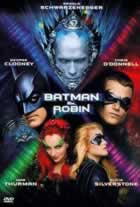 The fourth installment of the Warner Bros. franchise that began with 1989's Batman and the lowest-grossing of the film series. This film is often billed as the worst superhero movie of all time, even to the point that star George Clooney said he would refund people's money if they stopped him on the street and said they had paid to see it.
The fourth installment of the Warner Bros. franchise that began with 1989's Batman and the lowest-grossing of the film series. This film is often billed as the worst superhero movie of all time, even to the point that star George Clooney said he would refund people's money if they stopped him on the street and said they had paid to see it.
In an interview with Barbara Walters, Clooney claims he played Batman gay. The director Joel Schumacher also reputedly admits to not being proud of this film (to the point where he flat-out apologizes for the film, according to his commentary on the 2005 Special Edition DVD set), despite earlier statements to the contrary.
Batman & Robin earned the nickname "Batman on Ice" for a scene in which the titular heroes both inexplicably have retractable skate blades hidden inside their boots. The film was mocked for the poor script, over-extending the campy attitude of the previous installment Batman Forever, the poor casting of other "big-name" stars Uma Thurman and Arnold Schwarzenegger, and the addition of a poorly portrayed Batgirl, played by Alicia Silverstone. Likely due to the film's poor reception, no more Batman movies were made for nearly eight years.
Glitter (2001): Mariah Carey's vanity film
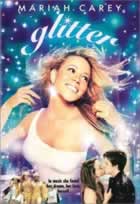 A semi-autobiographical movie about Mariah Carey. Critics universally panned it for seeming to be a vanity film intended only to enhance Carey's singing career. Carey had pushed for the project as early as 1997, but it finally came out on 2001.
A semi-autobiographical movie about Mariah Carey. Critics universally panned it for seeming to be a vanity film intended only to enhance Carey's singing career. Carey had pushed for the project as early as 1997, but it finally came out on 2001.
The reviews "Glitter" received were devastating and the movie did very poorly in theaters. In most countries it wasn't even released. In the USA it premiered only in 1,196 theaters and was the 11th highest-grossing movie over the weekend with $5M. One reviewer said "Only Mariah Carey could mess up a film about Mariah Carey."
It was originally scheduled to open over Labor Day weekend, but the film was pushed back three weeks when Mariah checked into a hospital for emotional stress. The accompanying soundtrack, Glitter, became Carey's worst showing on the charts, and the lowest selling of her career to date. The record label Virgin/EMI later ended their record deal with Carey, giving her a $28 million pay-off.
Although the film has been generally panned, it has made a cultural impact and reached infamous levels of notoriety. New slang has been invented with a negative connotation of "pulling a Glitter" to indicate performing horribly.
Kolberg (1945): That Nazi movie that came too late
 A 1945 Nazi propaganda film directed by Veit Harlan and Wolfgang Liebeneiner. It opened on January 30, 1945 simultaneously in Berlin and to the crew of the naval base at La Rochelle. It was also screened in the Reich chancellery after the broadcast of Hitler's last radio address on January 30.
A 1945 Nazi propaganda film directed by Veit Harlan and Wolfgang Liebeneiner. It opened on January 30, 1945 simultaneously in Berlin and to the crew of the naval base at La Rochelle. It was also screened in the Reich chancellery after the broadcast of Hitler's last radio address on January 30.
The film was intended to boost the morale of the Germans in the last phase of World War II. It was based on the autobiography of Joachim Nettelbeck, the mayor of Kolberg. It told the story of the 1807 successful defence of the fortress town of Kolberg against French troops.
Kolberg, begun in 1943, was made in Agfacolor with high production values. At a cost of more than eight million marks, it was the most expensive film of the Nazi era. Thousands of soldiers were used in the film, some diverted from their stations at substantial cost. To film scenes with snow during summer, 100 railway trucks brought salt to the set in Pommern. The film was finally completed at the Babelsberg Studios at Potsdam while the town and nearby Berlin were being steadily bombed.
The film was opened in a provisional cinema in Berlin and ran under the constant threat of air raids until the fall of Berlin in May 1945; the film came far too late for the hoped-for propaganda effect. Many theatres throughout Germany were already destroyed.
The film was rereleased in 1965, with an attached documentary, and is now available on digitally remastered DVD.
Showgirls (1995): Not even sexy enough
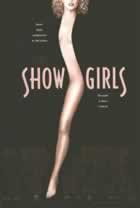 A large amount of hype was put behind promoting the gratuitous sex and nudity in the film, but the results were critically derided. The frequent and gratuitous nudity and simulated sex in the film, and the writing did not lend itself to what might have been an enthralling film.
A large amount of hype was put behind promoting the gratuitous sex and nudity in the film, but the results were critically derided. The frequent and gratuitous nudity and simulated sex in the film, and the writing did not lend itself to what might have been an enthralling film.
It is widely considered to have ruined the career of Elizabeth Berkley, the movie's lead, and the writer Joe Eszterhas has had difficulty living down the embarrassment as well. The film's star, Kyle MacLachlan, walked out of the movie's premiere, during which he was allegedly heard exclaiming, "I thought this was an art movie.".
Showgirls won seven of the thirteen Razzie Awards (Bad Movies Awards) it was nominated for. Paul Verhoeven gamely appeared in person at the Razzies ceremony to accept his "award" for Worst Director.
Gigli (2003): The end of Bennyfer
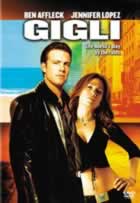 Originally a very dark comedy with no romantic subplot, the producers demanded script rewrites throughout filming. Some reviewers dubbed the film "The ultimate turkey of all time", referring to Lopez's character's sex talk to Affleck's character inviting him to commit an act of oral sex: "It's turkey time." "What?" "Gobble, gobble."
Originally a very dark comedy with no romantic subplot, the producers demanded script rewrites throughout filming. Some reviewers dubbed the film "The ultimate turkey of all time", referring to Lopez's character's sex talk to Affleck's character inviting him to commit an act of oral sex: "It's turkey time." "What?" "Gobble, gobble."
The Times newspaper gave the movie the rating below their lowest possible score of 0 stars, the only movie to recieve this score. This film is also said to have been a factor in the break-up of the engagement between its two stars. Winner of 7 Razzies (including 2005's Worst "Comedy" of Our First 25 Years). In addition Ben Affleck mocked the film on Saturday Night Live and The Tonight Show.
Battlefield Earth (2000): a "Travolting" Scientologist movie
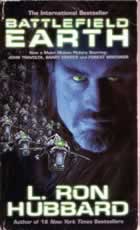 Based on L. Ron Hubbard's (Scientology founder) book of the same name, starring John Travolta. Hugely hyped by the Church of Scientology, it had the third worst 3,000-theater-plus opening weekend up to that time. Several describe the pain experienced while watching it: more than one reviewer gave their review as simply "Travolting." The Washington Post offered a rather pointed critique, stating in part: "A million monkeys with a million crayons would be hard-pressed in a million years to create anything as cretinous as Battlefield Earth."
Based on L. Ron Hubbard's (Scientology founder) book of the same name, starring John Travolta. Hugely hyped by the Church of Scientology, it had the third worst 3,000-theater-plus opening weekend up to that time. Several describe the pain experienced while watching it: more than one reviewer gave their review as simply "Travolting." The Washington Post offered a rather pointed critique, stating in part: "A million monkeys with a million crayons would be hard-pressed in a million years to create anything as cretinous as Battlefield Earth."
The film won seven Golden Raspberry Awards, including Worst Picture. In 2005, an eighth Razzie (for Worst "Drama" of Our First 25 Years) was awarded to the film.
Waterworld (1995): a sinked budget
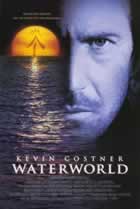 It was co-produced by Kevin Costner and directed by Kevin Reynolds. Problems encountered during filming massively escalated its budget, and it held the unfortunate distinction of being the most expensive film ever made (at the time), causing some critics to dub the movie "Fishtar" and "Kevin's Gate" (references to the notorious flops Ishtar and Heaven's Gate).
It was co-produced by Kevin Costner and directed by Kevin Reynolds. Problems encountered during filming massively escalated its budget, and it held the unfortunate distinction of being the most expensive film ever made (at the time), causing some critics to dub the movie "Fishtar" and "Kevin's Gate" (references to the notorious flops Ishtar and Heaven's Gate).
With a budget of $175 million, the film only grossed a meager $88 million at the U.S. box office, and was initially considered to be one of the biggest flops ever made. However, despite this poor start, the film was more successful overseas, and ultimately recouped its budget.
Waterworld is a science fiction film in the post-apocalyptic genre. It has frequently been called "Mad Max on Jet skis".
Catwoman (2004): can't even say Me-ouch!
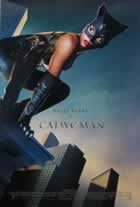 Ostensibly based on the DC Comics character and starring Halle Berry in a film that resembles next to nothing of its source material. Fans of the comic refused to call it by its given name, and instead dubbed it "CINO" (Catwoman In Name Only). It was declared "arguably the worst superhero film ever made" by the Orlando Sentinel. The Florida Times-Union (Jacksonville) put it more bluntly: "Me-ouch!"
Ostensibly based on the DC Comics character and starring Halle Berry in a film that resembles next to nothing of its source material. Fans of the comic refused to call it by its given name, and instead dubbed it "CINO" (Catwoman In Name Only). It was declared "arguably the worst superhero film ever made" by the Orlando Sentinel. The Florida Times-Union (Jacksonville) put it more bluntly: "Me-ouch!"
Winner of four Razzies for Worst Picture, Worst Actress, Worst Director (Pitof), and Worst Screenplay. In a rare move, Berry accepted her Razzie in person, and in her acceptance speech she said, "First of all, I want to thank Warner Brothers. Thank you for putting me in this piece of shit, God-awful movie..." Her statement was received with great applause and laughter.
Submit to:
 Del.icio.us
Del.icio.us
 Netscape
Netscape
 Furl
Furl
 Facebook
Facebook
 |
|
|
|
|
|
 Send by Email Send by Email
|
�


 Based on L. Ron Hubbard's (Scientology founder) book of the same name, starring John Travolta. Hugely hyped by the Church of Scientology, it had the third worst 3,000-theater-plus opening weekend up to that time. Several describe the pain experienced while watching it: more than one reviewer gave their review as simply "Travolting." The Washington Post offered a rather pointed critique, stating in part: "A million monkeys with a million crayons would be hard-pressed in a million years to create anything as cretinous as Battlefield Earth."
Based on L. Ron Hubbard's (Scientology founder) book of the same name, starring John Travolta. Hugely hyped by the Church of Scientology, it had the third worst 3,000-theater-plus opening weekend up to that time. Several describe the pain experienced while watching it: more than one reviewer gave their review as simply "Travolting." The Washington Post offered a rather pointed critique, stating in part: "A million monkeys with a million crayons would be hard-pressed in a million years to create anything as cretinous as Battlefield Earth."
 Del.icio.us
Del.icio.us
 Netscape
Netscape
 Furl
Furl
 Facebook
Facebook
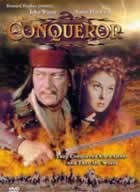 A Howard Hughes-funded box-office disaster featuring John Wayne as Genghis Khan and the redheaded Susan Hayward as a Tatar princess. The movie was filmed in Utah downwind from an atomic testing range in Nevada and is often blamed for the cancer deaths of many of the cast and crew, including both Hayward and Wayne.
It appears in Michael Sauter's book The Worst Movies of All Time. Hughes thought the movie was so bad that he bought up every copy (which cost him about $12 million) and he refused to distribute the film until 1974, when Paramount reached a deal with him. This would be the last film that Hughes would produce.
A Howard Hughes-funded box-office disaster featuring John Wayne as Genghis Khan and the redheaded Susan Hayward as a Tatar princess. The movie was filmed in Utah downwind from an atomic testing range in Nevada and is often blamed for the cancer deaths of many of the cast and crew, including both Hayward and Wayne.
It appears in Michael Sauter's book The Worst Movies of All Time. Hughes thought the movie was so bad that he bought up every copy (which cost him about $12 million) and he refused to distribute the film until 1974, when Paramount reached a deal with him. This would be the last film that Hughes would produce.
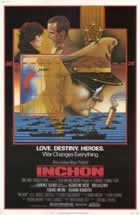 A story says that one day, Sun Myung Moon (Unification Church) began crying and could not stop. To raise his spirits he took a trip to the movie theatre and the crying stopped. He saw this as a sign from God and resolved to make his own motion picture. Moon remembered the UN forces landing at Inchon, and how the mastermind behind the landings, General Douglas MacArthur must have been inspired by God, so he invested his personal fortune on a movie about it.
A story says that one day, Sun Myung Moon (Unification Church) began crying and could not stop. To raise his spirits he took a trip to the movie theatre and the crying stopped. He saw this as a sign from God and resolved to make his own motion picture. Moon remembered the UN forces landing at Inchon, and how the mastermind behind the landings, General Douglas MacArthur must have been inspired by God, so he invested his personal fortune on a movie about it.
 The fourth installment of the Warner Bros. franchise that began with 1989's Batman and the lowest-grossing of the film series. This film is often billed as the worst superhero movie of all time, even to the point that star George Clooney said he would refund people's money if they stopped him on the street and said they had paid to see it.
The fourth installment of the Warner Bros. franchise that began with 1989's Batman and the lowest-grossing of the film series. This film is often billed as the worst superhero movie of all time, even to the point that star George Clooney said he would refund people's money if they stopped him on the street and said they had paid to see it.
 A semi-autobiographical movie about Mariah Carey. Critics universally panned it for seeming to be a vanity film intended only to enhance Carey's singing career. Carey had pushed for the project as early as 1997, but it finally came out on 2001.
A semi-autobiographical movie about Mariah Carey. Critics universally panned it for seeming to be a vanity film intended only to enhance Carey's singing career. Carey had pushed for the project as early as 1997, but it finally came out on 2001.
 A 1945 Nazi propaganda film directed by Veit Harlan and Wolfgang Liebeneiner. It opened on January 30, 1945 simultaneously in Berlin and to the crew of the naval base at La Rochelle. It was also screened in the Reich chancellery after the broadcast of Hitler's last radio address on January 30.
A 1945 Nazi propaganda film directed by Veit Harlan and Wolfgang Liebeneiner. It opened on January 30, 1945 simultaneously in Berlin and to the crew of the naval base at La Rochelle. It was also screened in the Reich chancellery after the broadcast of Hitler's last radio address on January 30.
 A large amount of hype was put behind promoting the gratuitous sex and nudity in the film, but the results were critically derided. The frequent and gratuitous nudity and simulated sex in the film, and the writing did not lend itself to what might have been an enthralling film.
A large amount of hype was put behind promoting the gratuitous sex and nudity in the film, but the results were critically derided. The frequent and gratuitous nudity and simulated sex in the film, and the writing did not lend itself to what might have been an enthralling film.
 Originally a very dark comedy with no romantic subplot, the producers demanded script rewrites throughout filming. Some reviewers dubbed the film "The ultimate turkey of all time", referring to Lopez's character's sex talk to Affleck's character inviting him to commit an act of oral sex: "It's turkey time." "What?" "Gobble, gobble."
Originally a very dark comedy with no romantic subplot, the producers demanded script rewrites throughout filming. Some reviewers dubbed the film "The ultimate turkey of all time", referring to Lopez's character's sex talk to Affleck's character inviting him to commit an act of oral sex: "It's turkey time." "What?" "Gobble, gobble."
 It was co-produced by Kevin Costner and directed by Kevin Reynolds. Problems encountered during filming massively escalated its budget, and it held the unfortunate distinction of being the most expensive film ever made (at the time), causing some critics to dub the movie "Fishtar" and "Kevin's Gate" (references to the notorious flops Ishtar and Heaven's Gate).
It was co-produced by Kevin Costner and directed by Kevin Reynolds. Problems encountered during filming massively escalated its budget, and it held the unfortunate distinction of being the most expensive film ever made (at the time), causing some critics to dub the movie "Fishtar" and "Kevin's Gate" (references to the notorious flops Ishtar and Heaven's Gate).
 Ostensibly based on the DC Comics character and starring Halle Berry in a film that resembles next to nothing of its source material. Fans of the comic refused to call it by its given name, and instead dubbed it "CINO" (Catwoman In Name Only). It was declared "arguably the worst superhero film ever made" by the Orlando Sentinel. The Florida Times-Union (Jacksonville) put it more bluntly: "Me-ouch!"
Ostensibly based on the DC Comics character and starring Halle Berry in a film that resembles next to nothing of its source material. Fans of the comic refused to call it by its given name, and instead dubbed it "CINO" (Catwoman In Name Only). It was declared "arguably the worst superhero film ever made" by the Orlando Sentinel. The Florida Times-Union (Jacksonville) put it more bluntly: "Me-ouch!"






























